Brighton Corporation Tramways
History
Brighton Corporation commenced services on its newly built electric tramway on the 25th November 1901, and operated the system for almost 38 years, before its closure on the 31st August 1939.
Uniforms
The early uniforms (circa 1901 to the mid-1920s) were single-breasted with five buttons, presumably brass (see link), a breast pocket and stand-up collars; the latter do not appear to have borne any insignia. The tensioned-crown peaked caps carried a brass cap badge comprising the full system title — 'BRIGHTON CORPORATION TRAMWAYS' — in a scroll inlaid with deep red enamel, below which was the municipal device (see below for an example). This badge was worn above a brass, script-lettering grade badge — either 'Motorman' or 'Conductor' — which in the early years was underlined, something of a rarity for a British tramway system. At some point, the underlining was dropped, though it is not clear when. Motormen and conductors also wore a brass licence badge, which comprised the municipal device above an employee number (in nickel) and the grade ('MOTORMAN' or 'CONDUCTOR'), all surrounded by the full system title; these were backed in leather and were hung from a button on the tunic or greatcoat.
Tramcar staff were also issued with long, double-breasted greatcoats with five pairs of buttons, and high, fold-over collars; the latter do not appear to have carried any badges.
Although the uniform jackets remained unchanged right through to the mid 1920s, there were changes to both the cap badges and the licences. The round municipal licence badges appear to have been superseded by a new elaborate design circa 1920, which though still brass, now carried the full municipal arms along with a nickel employee number preceded by either an 'M' or a 'C'. Like its predecessor, it was backed in leather with a loop to facilitate suspension from a jacket button. A change was also made to the main cap badge, probably some time in the mid-to-late 1920s, so that it now incorporated a brass plate supported by feathers, which bore either a nickel ‘M’ (for ‘motorman’) or ‘C’ (for ‘conductor’), along with an employee number (see below for an example). This seems to have been intended to replace the municipal licence badges, as these no longer appear on photographs taken after this date.
New jackets were introduced in the 1920s, which though still single-breasted, now had lapels rather than stand-up collars, three waist-level pockets, an open breast pocket and epaulettes; it is unclear whether the latter carried any badges. A further change was made to the jackets in the 1930s, to a double-breasted design with four pairs of buttons, lapels and epaulettes; once again, it is unclear whether the jackets bore any insignia. Cap badges were now issued in chrome, which although identical to their predecessors in form, now bore the grade letter and the employee number in brass.
Photographs of inspectors are rare, but those that have survived (from the latter years of the tramway) suggest that they wore single-breasted tunics with lapels. The first cap badges were very similar to the deep red enamel cap badges issued to tramcar staff, but with the grade ('DEPUTY CHIEF INSPECTOR' is known, but 'CHIEF INSPECTOR' and 'INSPECTOR' presumably existed too) in a ribbon below the shield device. This was superseded, probably in the mid-to-late 1920s, by a very similar design of badge, but incorporating feathers ('INSPECTOR' is known). It is possible that the latter design of badge was subsequently issued in chrome (during the 1930s), but if so, no examples are known.
Perhaps uniquely amongst UK tramway systems, Brighton issued inspectors with licence bagdes. Examples have survived from the 1901-1920s period, which are identical to those worn by conductors and motormen (see below), save for the grade — 'INSPECTOR'.
Brighton Corporation, in common with many tramways during the Great War, employed female staff to replace men lost to the armed services. I am only aware of a single photograph of one of these ladies, which unfortunately, was taken at a distance. The subject is wearing a tailored, single-breasted jacket with lapels and epaulettes, along with a long matching skirt; it is unclear what insignia, if any, the jacket carried. Headgear took the form of a wide-crown peaked cap; this bore a script-lettering grade badge rather than the standard BCT cap badge.
Further reading
For a pictorial history of the system, see: 'Brighton's Tramways' by R Harley; Middleton Press (1992).
Images
Motormen and conductors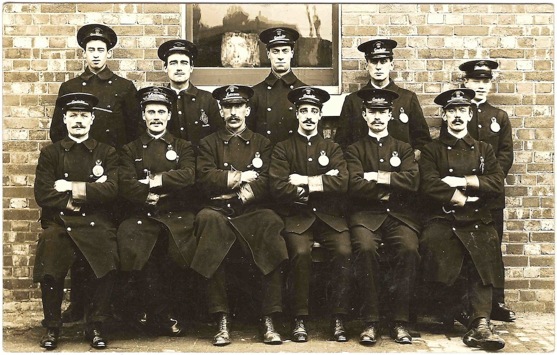
A group of conductors and two motormen (second and third from left, front row), probably taken in the first decade of operation. Author's Collection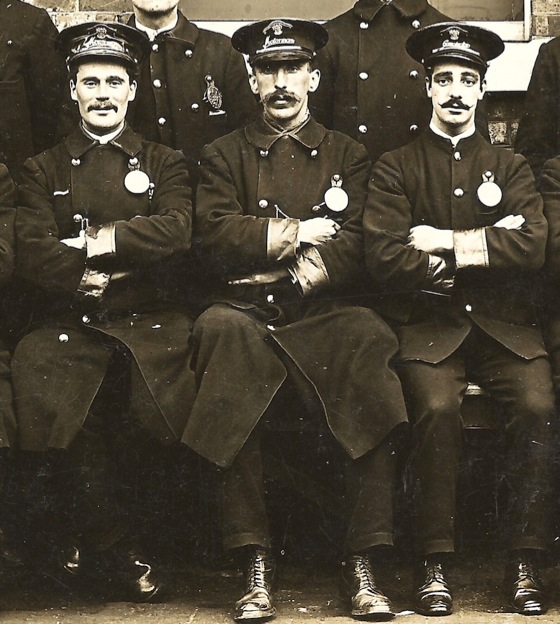
An enlargement of the above photograph, showing two motormen and a conductor. All are wearing the first pattern of 'Brighton Corporation Tramways' cap badge, along with underlined script-lettering grade badges, either 'Motorman' or 'Conductor'. All present are also wearing municipal licence badges. 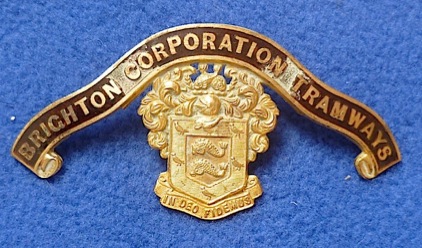
Brighton Corporation Tramways cap badge — brass and deep red enamel. This badge was probably worn from the opening of the system through to the mid 1920s. Author's Collection.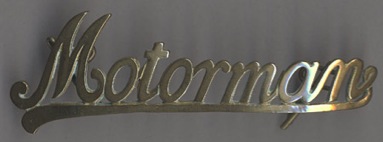
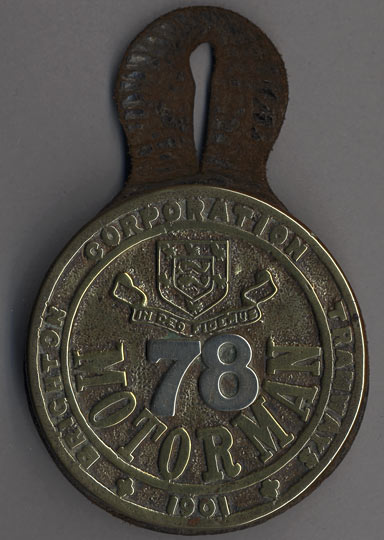
'Motorman' cap badge and licence badge issued to Harry Bailey, who worked for the tramway from 1901 to 1907. Reproduced with the kind permission of The Royal Pavilion Museums, Brighton and Hove. All enquiries regarding image printing, reproduction and licensing should be made to ‘objectimages@brighton-hove.gov.uk’.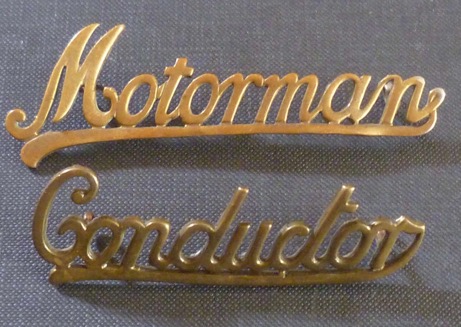
Underlined, script-lettering grade cap badges, of the type initially issued by Brighton Corporation Tramways. At some point, probably relatively early on, these were replaced by non-underlined patterns. Author's Collection.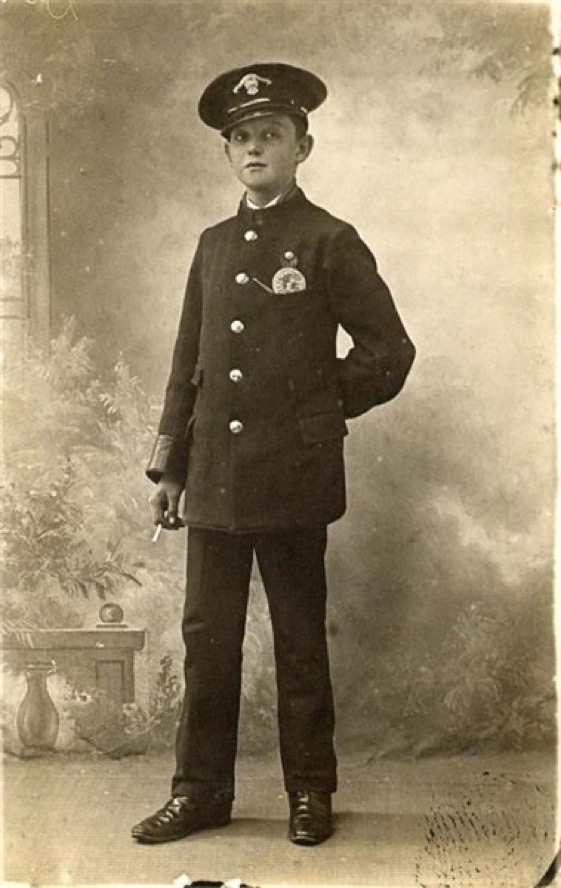
A studio portrait of Conductor Walter George Dunkerton, taken in 1917 when he was only 14 years of age. It is unclear why he is not wearing a script-lettering grade badge. With thanks to his grand-daughter, Chris Banwell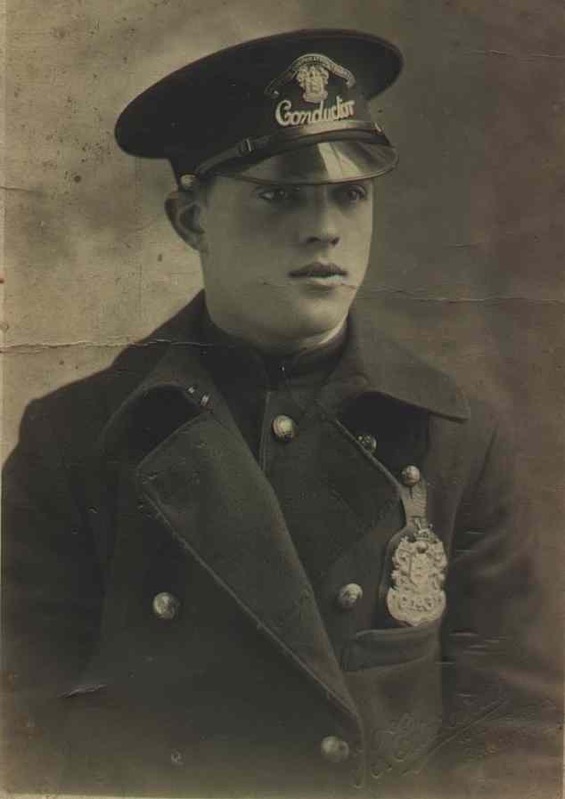
Conductor Sonny Cook in the first pattern of uniform, but with later style of licence badge, taken in the early to mid-1920s. His grade badge is, in contrast to earlier years, not underlined. With thanks to his nephew, Eric Cook.
Standard ‘off the shelf’ script-lettering cap badges of the type used by Brighton — brass. Early badges were underlined, but later photos indicate that a change was made to badges without underlining. Author's Collection.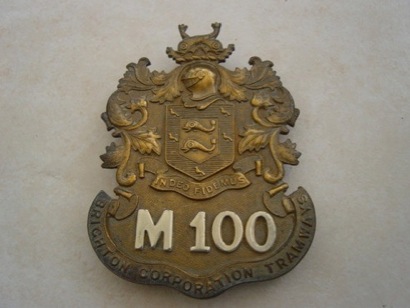
Municipal licence badge — probably worn from the early to the late 1920s. Source unknown.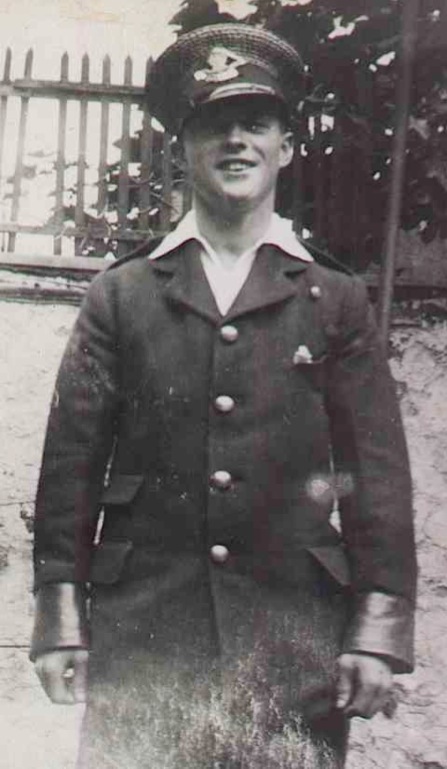
Conductor Sonny Cook with later-period uniform, taken in the late 1920s/ early 1930s. The new cap badge incorporated the employee number and a grade letter, in this case a 'C' for conductor. With thanks to his nephew, Eric Cook.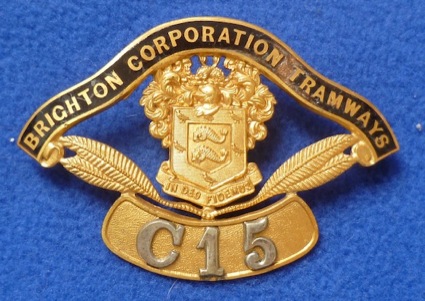
Brighton Corporation Tramways conductor's cap badge (mid 1920s to 1930s) — brass and deep red enamel. Author's Collection.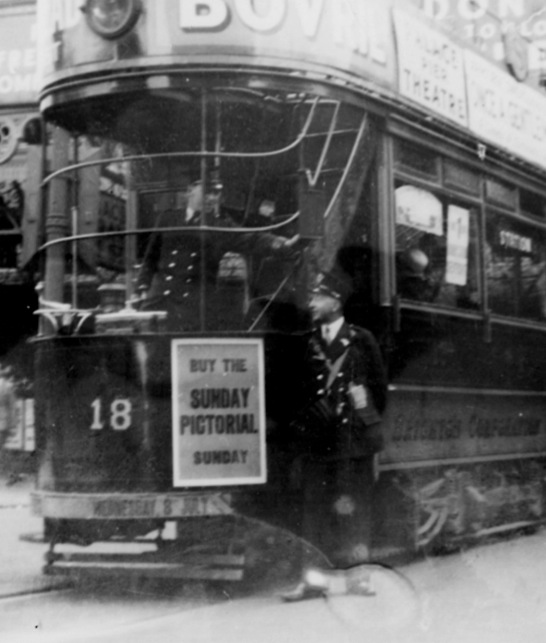
A poor quality photograph, but one which does show the double-breasted uniforms worn during the closing years of the tramway in the 1930s, by which time buttons and cap badges would have been chrome rather than brass. Photo courtesy of the Tramways and Light Railway Society.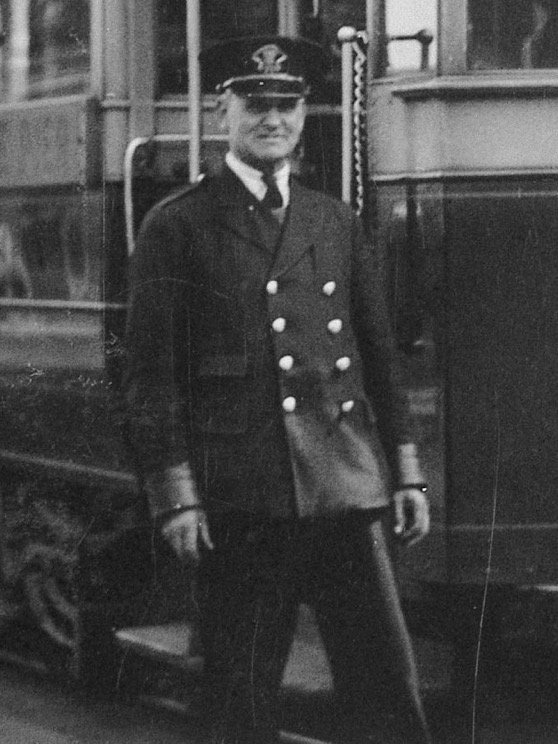
A motorman poses for the camera with Tramcar No 49 — photo undated, but probably taken in the mid-to-late 1930s. Photo courtesy of the National Tramway Museum.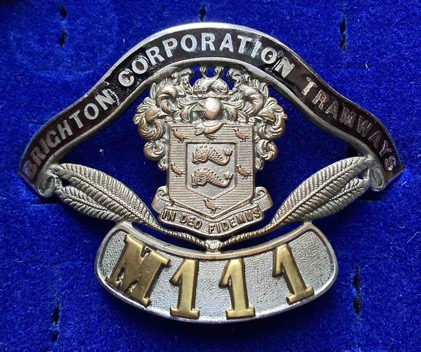
Brighton Corporation Tramways motorman's cap badge (1930s) — chrome and deep red enamel. Author's Collection.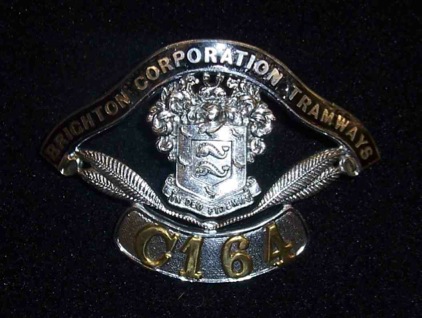
Brighton Corporation Tramways conductor's cap badge (1930s) — chrome and deep red enamel. With thanks to the National Tramway Museum).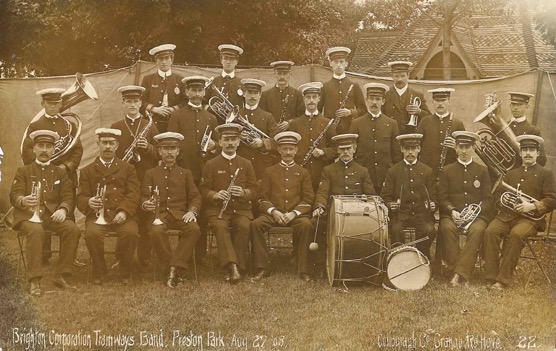
Brighton Corporation Tramways Band, Preston Park, 27th August, 1908. Author's Collection.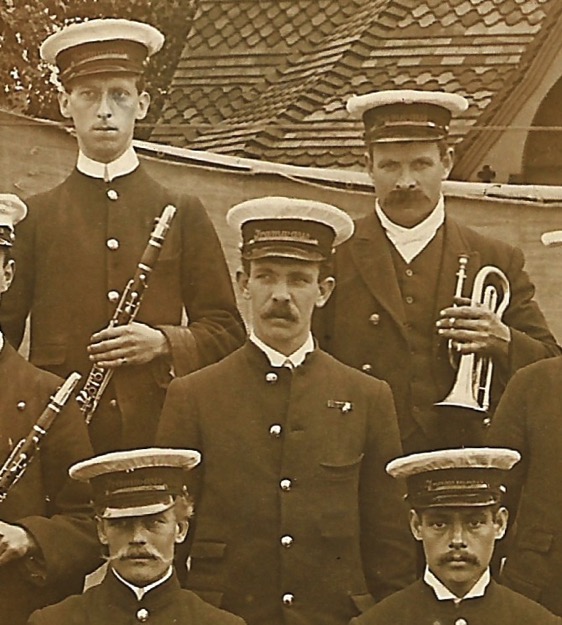
An enlargement of the above photograph showing that all present are wearing a large script-lettering 'Tramways' cap badge, possibly embroidered.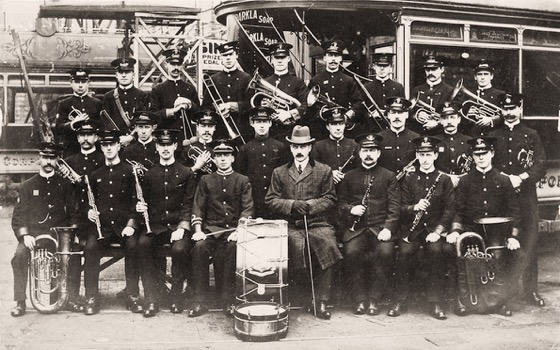
Brighton Corporation Tramways Band — photo undated, but probably taken shortly before the Great War. By this time, the members of the band were wearing their standard cap badges. Photo courtesy of Gavin Holman.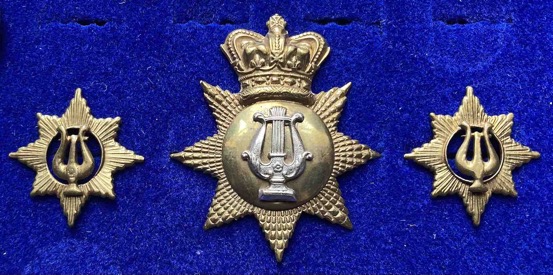
A cap badge and two collar badges worn by the last conductor of Brighton Tramways Band — Percy Grainger — in 1935. Author's Collection.
Senior staff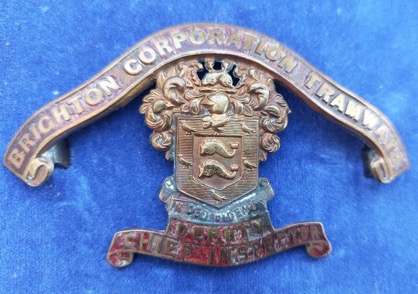
Brighton Corporation Tramways 'DEPUTY CHIEF INSPECTOR' cap badge — brass and deep red enamel. This badge was probably worn from the opening of the system through to the mid 1920s. Photo courtesy of Darrne Lodge.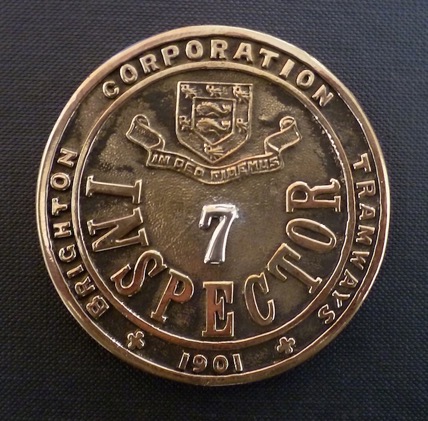
Inspector licence badge, No 7 — brass with nickel number. Probably worn from 1901 through to the 1920s. Author's Collection.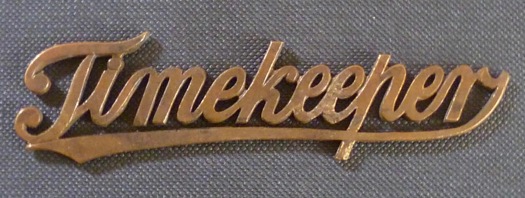
An underlined 'Timekeeper' script-lettering grade badge — brass. At the moment there is no proof that the BCT employed timekeepers, but if they did, and there is a reasonably possibility that they did, then this pattern of badge would be a strong candidate. Author's Collection.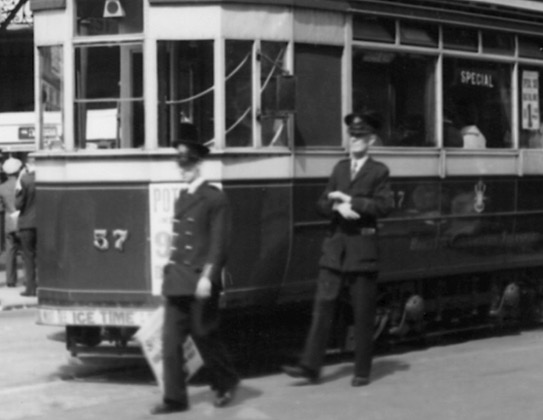
Another rather poor quality photograph, but one which shows an inspector (right) — photo undated, but almost certainly taken during the 1930s. Photo courtesy of the Tramways and Light Railway Society.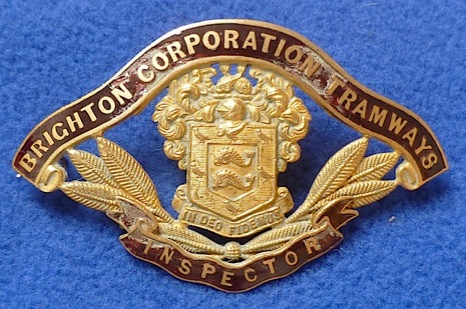
Brighton Corporation Tramways inspector's cap badge (mid 1920s to 1930s) — brass and deep red enamel. Author's Collection.
Female staff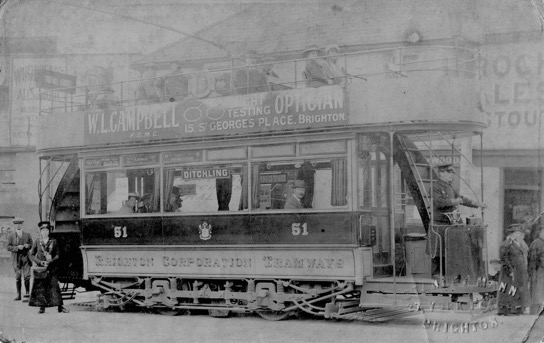
A rare photograph of a BCT conductress, with Tramcar No 51 on a service to Ditchling — photo undated, but certainly taken during the Great War. Photograph by Stanley Mann of 27 Oak Place, Brighton. Author's Collection.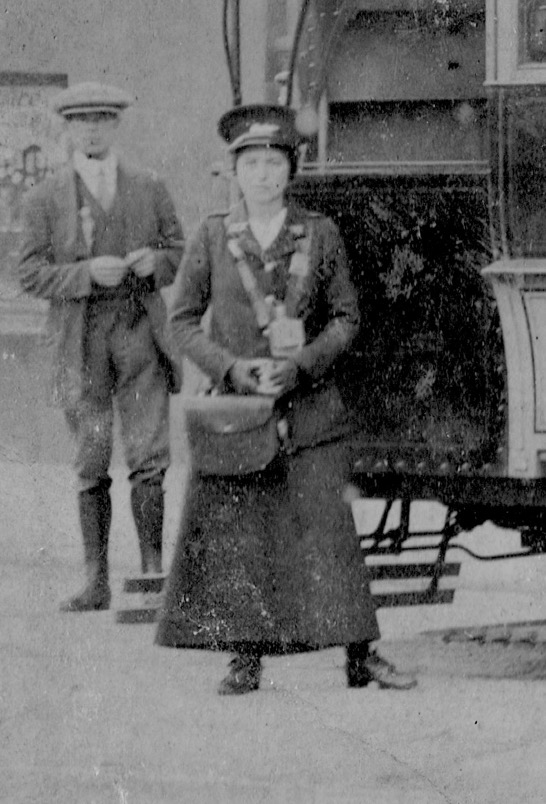
An enlargement of the above photograph showing the conductress. Although her uniform insignia cannot be made out, it is clear that her wide-crown peaked cap carries a script-lettering grade badge rather than the standard BCT cap badge.